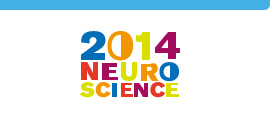演題詳細
Poster
学習・長期記憶
Learning and Long-term Memory
| 開催日 | 2014/9/11 |
|---|---|
| 時間 | 16:00 - 17:00 |
| 会場 | Poster / Exhibition(Event Hall B) |
マーモセットによる新奇な行動学習への動機づけに関連する長期的な脳構造の変化
Long-term structural changes in the brain areas related to sustained motivation for learning of novel repertoire in adult marmosets
- P1-280
- 山﨑 由美子 / Yumiko Yamazaki:1,2 疋島 啓吾 / Keigo Hikishima:3,4 斉木 正門 / Masakado Saiki:2 稲田 正幸 / Masayuki Inada:2 佐々木 えりか / Erika Sasaki:3,4 Lemon Roger / Roger Lemon:5 Price Cathy / Cathy Price:6 岡野 栄之 / Hideyuki Okano:3,7 入來 篤史 / Atsushi Iriki:2
- 1:慶應大・先導研 / Advanced Res Centers, Keio University 2:理研BSI象徴概念発達 / Lab. Symbol Cog Dev, RIKEN BSI, Saitama, Japan 3:慶應大院医生理 / Dept Physiol, Keio Univ, Tokyo, Japan 4:実中研 / Central Inst Exptl Animals, Kanagawa, Japan 5:Sobell Dept Motor Neurosci Movement Disorders, UCL Inst Neurol, London, UK / Sobell Dept Motor Neurosci Movement Disorders, UCL Inst Neurol, London, UK 6:Wellcome Trust Ctr Neuroimaging, Univ Col London, London, UK / Wellcome Trust Ctr Neuroimaging, Univ Col London, London, UK 7:理研BSI・理研慶大連携 / RIKEN Keio Joint Res Lab, RIKEN BSI, Saitama, Japan
Acquisition of new repertoire requires reorganization of existing brain networks, which are enhanced and maintained by active and prolonged interaction between organisms and external environments. We developed a step-by-step protocol to train common marmosets to retrieve a food item by using a rake-shaped tool, and found that it took almost one year of training to acquire this new skill. Then we investigated volumetric changes in the brain structure of the trained marmosets as they learnt to use tool. We performed structural MRI scans before, during, and after the training, and confirmed that long term tool use training induced volumetric changes in several brain structures which clearly differed from those of short term training. The volume of nucleus accumbens increased in the later phases of the training, and was positively correlated with performance indices, but not with the number of reinforcers earned, suggesting increased motivation for tool use as marmosets effectively learned to use the rake. Other brain regions also increased volume including visual areas, STS, and the anterior trunk of the corpus callosum. White matter changes also occurred in the middle and inferior cerebellar peduncles which could reflect the sustained capacity for tool use long after completion of training. These unique brain areas supported gradual but drastic behavioral and motivational changes during long-term training, both for acquisition and maintenance of a novel skill. (This work was supported by the Funding Program for World-leading Innovative R&D on Science and Technology (FIRST) at RIKEN, Japan)

